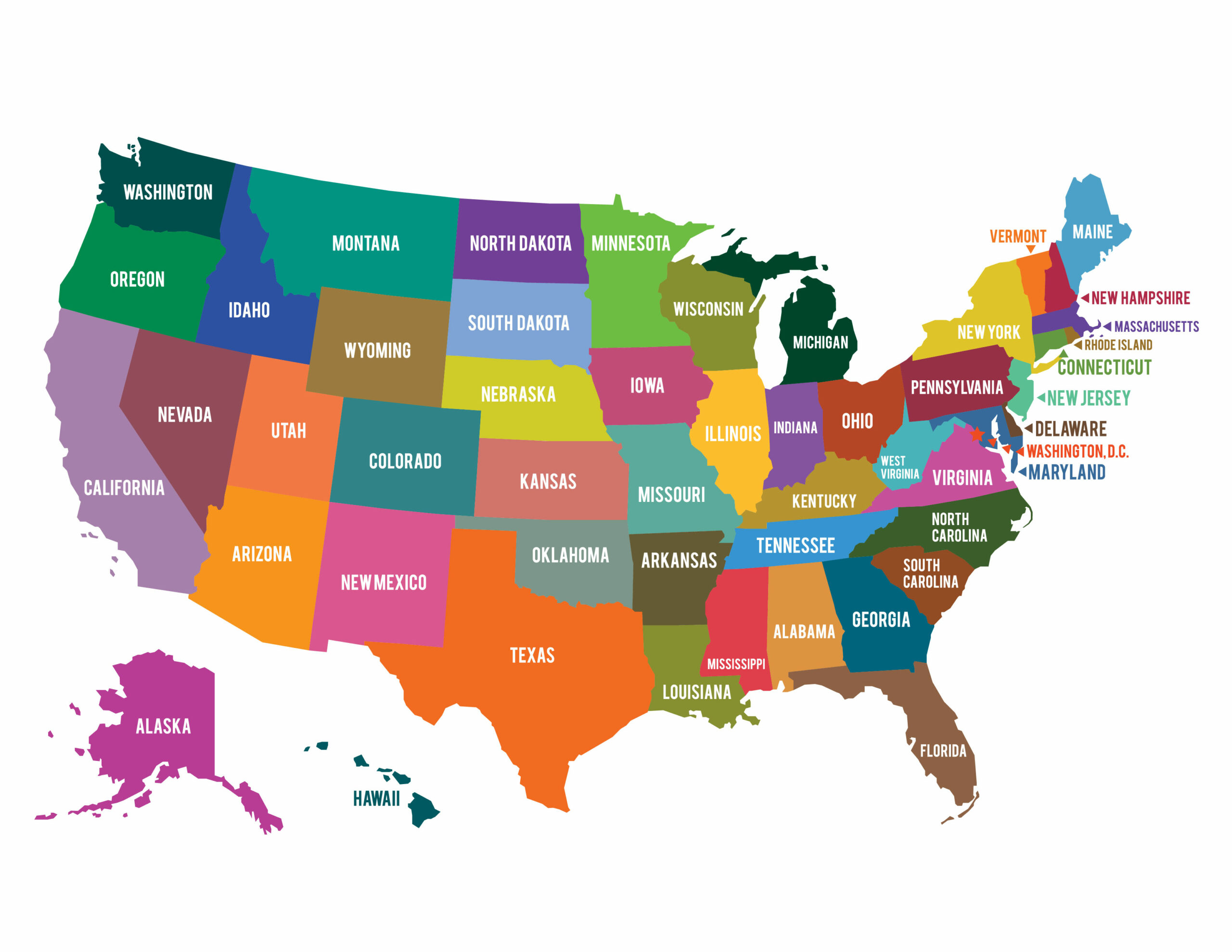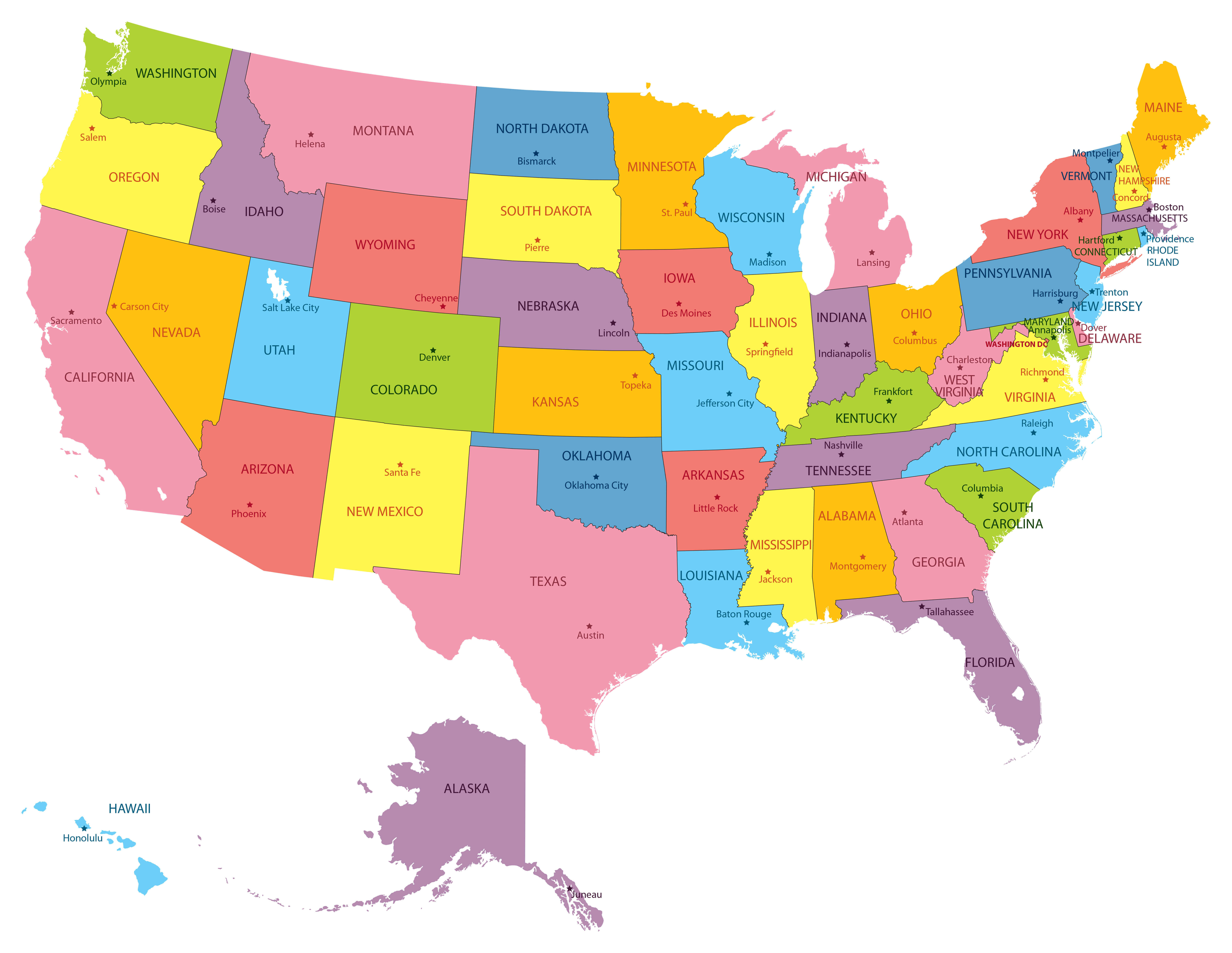
The Enduring Tapestry: A Journey Through America’s 50 States
The United States of America, often perceived as a singular entity on the global stage, is in reality a magnificent and often bewildering mosaic of 50 distinct states. Each a sovereign entity within a federal union, these states embody a breathtaking spectrum of geography, culture, economy, and political ideology. To truly understand America is to grasp the profound, sometimes contentious, yet ultimately resilient interplay between these individual components – a grand experiment in unity amidst unparalleled diversity.
From the sun-drenched beaches of Florida to the snow-capped peaks of Alaska, and from the bustling urban canyons of New York to the quiet cornfields of Iowa, the American states defy easy categorization. This vastness, both geographical and conceptual, is perhaps the nation’s most defining characteristic. As the French political thinker Alexis de Tocqueville observed in the 19th century, the genius of the American system lay in its federal structure, allowing for local governance and diverse expressions while maintaining a cohesive national identity. Two centuries later, his insights remain remarkably pertinent.
A Kaleidoscope of Landscapes and Lifestyles

Geographically, the states are a study in contrasts. California, a titan of innovation and agriculture, boasts towering redwoods, arid deserts, and a sprawling coastline, its diverse climate supporting everything from Hollywood glamour to Silicon Valley’s tech empires. In stark contrast, the vast, sparsely populated plains of states like Wyoming and Montana evoke a rugged frontier spirit, dominated by ranching, mining, and breathtaking national parks. The humid bayous of Louisiana, steeped in Creole and Cajun traditions, feel a world away from the volcanic landscapes and Polynesian heritage of Hawaii, America’s only island state.
The sheer scale of these differences is staggering. Alaska, the largest state by land area, could swallow Texas, California, and Montana combined, while Rhode Island, the smallest, fits comfortably within a single major city. This physical diversity directly shapes lifestyles. Life in a densely packed New Jersey suburb bears little resemblance to the isolated existence of an Alaskan homesteader or the communal rhythms of a Navajo Nation reservation in Arizona. Yet, all are undeniably American.
Historical Threads and Economic Engines
The story of the states is inextricably linked to the nation’s historical evolution. The original thirteen colonies, clustered along the Atlantic seaboard, brought with them distinct European influences and varied economic bases – from New England’s maritime trade to the Southern states’ agrarian economies reliant on slave labor. This foundational divergence set the stage for enduring regional identities and, tragically, for the fissures that would lead to the Civil War.
As the nation expanded westward, each new state brought its own unique narrative. The Louisiana Purchase dramatically altered America’s footprint, opening up vast territories that would become the breadbasket states of the Midwest. The Gold Rush drew prospectors to California, sparking an economic boom that continues to this day. The annexation of Texas, once an independent republic, added a distinct blend of Anglo-American and Hispanic cultures. Each star on the flag tells a story of migration, conflict, and settlement, from the rugged individualism of the frontier to the collective efforts that built sprawling metropolises.
Economically, the states function as interconnected, yet specialized, engines. New York remains a global financial hub, its Wall Street synonymous with capitalism. Texas and Oklahoma are energy powerhouses, their economies fueled by vast oil and natural gas reserves. The Midwest, often called the "Corn Belt," feeds the nation and much of the world, while the Pacific Northwest, home to tech giants like Microsoft and Amazon, drives innovation in software and e-commerce. Florida thrives on tourism and agriculture, particularly citrus, while the Carolinas maintain a strong manufacturing base alongside emerging tech industries. This economic specialization, while efficient, also highlights vulnerabilities, as states grapple with global competition and the need to diversify.
Political Fault Lines and Cultural Mosaics
Politically, the 50 states represent a dynamic and often fractious democracy. Each state elects its own governor, legislature, and judiciary, and its residents vote for representatives to the federal Congress and for the President. This federalist system, designed to balance central authority with local autonomy, means that policies can vary wildly from one state to another on issues ranging from education and healthcare to environmental protection and social rights.

The "red state" versus "blue state" dichotomy, while an oversimplification, reflects genuine ideological divides. States like Utah and Idaho often lean conservative, emphasizing traditional values and limited government intervention. Conversely, states like Massachusetts and Vermont are reliably liberal, championing social welfare programs and progressive policies. Swing states, such as Pennsylvania and Arizona, become battlegrounds in national elections, their shifting demographics and nuanced political landscapes often determining the outcome of presidential races. This constant political negotiation, sometimes leading to gridlock, sometimes to groundbreaking innovation, is a hallmark of American governance.
Culturally, the states are an astonishing patchwork of traditions, dialects, and cuisines. New Orleans, Louisiana, is the birthplace of jazz and a culinary mecca, its vibrant French and African influences palpable in its music, food, and architecture. Nashville, Tennessee, is the undisputed capital of country music, while the Pacific Northwest boasts a distinct coffee culture and a penchant for outdoor adventure. The Southwest, particularly New Mexico and Arizona, retains strong Native American and Hispanic cultural traditions, evident in its art, food, and festivals. Even within states, regional differences abound – the difference between upstate and downstate New York, or northern and southern California, is often profound. These cultural distinctions enrich the national fabric, offering a constant source of innovation and identity.
Challenges and the Enduring Experiment
Yet, this vibrant tapestry is not without its frayed edges. The sheer diversity that is America’s strength can also be a source of tension. Political polarization, exacerbated by media fragmentation and social media echo chambers, often sees states acting as ideological bulwarks, making compromise difficult at the national level. Economic disparities between states, and even within them, fuel debates over federal aid, infrastructure investment, and social safety nets.
Environmental challenges, from rising sea levels threatening coastal states like Florida and Louisiana to persistent droughts in California and the Southwest, require coordinated efforts that often clash with individual state interests. Social issues, such as racial justice, immigration, and gun control, ignite passionate debates that play out differently across the 50 state legislatures, reflecting the diverse values of their populations.
Despite these formidable challenges, the American experiment in federalism endures. The states continue to serve as laboratories of democracy, testing new policies and approaches that can later be adopted nationally. California’s pioneering environmental regulations, for example, often influence federal standards. Vermont’s early adoption of civil unions paved the way for broader LGBTQ+ rights. States are also crucibles of resilience, adapting to economic shifts, natural disasters, and demographic changes, constantly reinventing themselves while holding onto their core identities.
Conclusion: E Pluribus Unum
In the end, the 50 states are more than just administrative divisions; they are living narratives, each contributing a unique chapter to the ongoing story of America. They embody the nation’s founding motto, "E Pluribus Unum" – Out of Many, One. While the "many" are vibrantly distinct, fiercely independent, and often at odds, the aspiration for "one" remains a powerful, unifying force.
To truly appreciate the United States is to move beyond monolithic perceptions and embrace the kaleidoscopic reality of its constituent parts. It is to understand that America is not a single destination, but a journey through fifty distinct worlds, each offering its own lessons, challenges, and enduring spirit. The 50 states, in their magnificent disarray and enduring cohesion, remain the living, breathing testament to an ongoing national saga – a testament to the idea that unity can, and does, flourish amidst an astonishing array of differences.


